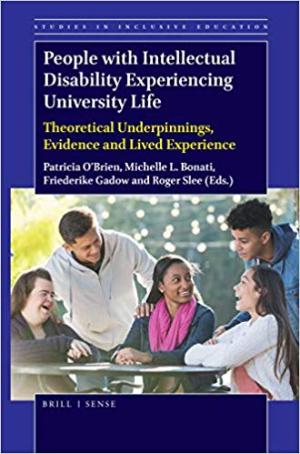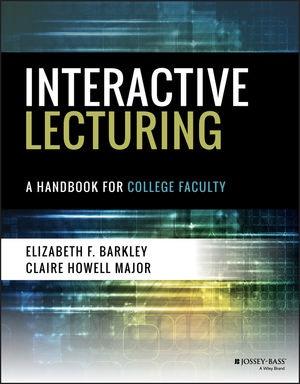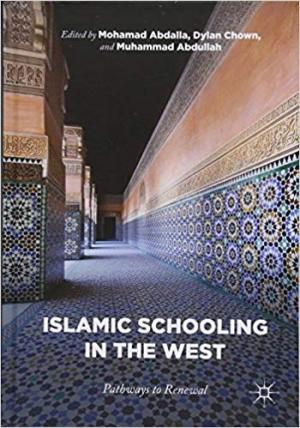Resources
A 2017 course by Jill DeTemple at Southern Methodist University provides "an introduction to a wide variety of religious traditions, communities and practices within the context of globalization" through modern methods in the field of the study of religion.
A 2017 course by Jill DeTemple at Southern Methodist University introduces "International Economic Development as a global social institution which often intersects with social constructions of gender, religious institutions, and religious world views."
A 2018 course by Jill DeTemple at Southern Methodist University is "an introduction to the principal questions and modes of argument that have shaped the Philosophy of Religion as an academic discipline." Specific ethical issues are analyzed.
A 2018 course by Jill DeTemple at Southern Methodist University "is designed as an intermediate course" to introduce students to "the border as a geographic and cognitive location rooted in history."
A 2019 course by Peter Gottschalk at Wesleyan University considers religion "as a phenomenon . . . the meaning of 'sacredness' & 'the sacred' and question their comparative use" in various religious traditions.

This book will introduce the reader to international perspectives associated with post-secondary school education for students with intellectual disability attending university settings. Examples of students with intellectual disability gaining their right to full inclusion within university settings are outlined, as well as the barriers and facilitators of such innovation. The four parts of the text will act as a reader for all stakeholders of inclusion at the university level. The first part examines the philosophical, theoretical and rights-based framework of inclusion. The second part provides evidence and insight into eight programs from across the globe, where students with intellectual disability are included within university settings. The third part consists of six chapters associated with the lived experiences of stakeholders in the programs profiled in Part 2. These stories are represented through the voices of former students of inclusive tertiary education initiatives, parents of adult children with intellectual disability who have participated in tertiary education, and lecturers who have taught students with intellectual disability as members of their courses. In the fourth part, critical issues are examined, including the role of secondary school counsellors, sustaining post university outcomes, transition from university to employment, inclusive university teaching approaches, and decision-making approaches to successfully implement a tertiary education initiative. The text concludes with a synthesis of the book themes and proposes calls to action with specific tasks to move the rhetoric of human rights into reality for adults with intellectual disability through an inclusive tertiary education.

On April 10-11, 2015 the University of San Francisco hosted the national conference, “Islam at U.S. Jesuit Colleges and Universities.” The overall aim of the conference was to examine the evolution of the mission, objectives, and identity of Catholic Jesuit colleges and universities in light of the expansion of the study of Islam and the growing presence of Muslim faculty, staff, and students on our campuses. (From the Publisher)

Barkley and Major have compiled an invaluable compendium of information about improving on traditional class lectures by including interactive elements. Like McKeachie’s Teaching Tips or Davis’ Tools for Teaching, this book can be read cover to cover or approached as a resource to consult when needed, as just about every page includes some practical suggestions for improving teaching and student engagement. The book opens with a two-chapter consideration of what the authors call a “Conceptual Framework for Interactive Learning.” These chapters examine the benefits and drawbacks of lectures and active learning strategies as well as the wide variety of each, arguing ultimately for an integrative model that takes advantage of the best of both approaches. The suggestions in these chapters and throughout the book are based on recent research rather than recourse to traditional arguments about the superiority of one modality over another. The ultimate strengths of this book, beyond the sheer volume of useful information, are its thoughtful mix of approaches and avoidance of a one-size-fits-all approach, all presented in concrete, actionable terms. This handbook is divided into three parts: the conceptual opening, twelve chapters on Engaging Presentation Tips, and eight chapters on Active Learning Techniques. The second two parts include 53 tips for creating engaging presentations and 32 suggestions for active learning techniques, most illustrated through specific examples. These are previewed at the beginning of each relevant chapter in a simple chart that directs reader attention to what each tip aims to improve and directions for implementing changes. Although it is impossible to itemize those tips here, it is indicative of the scope of the handbook’s broad coverage that the index includes subjects as diverse as voice modulation, metacognitive reflection, “dead wood words,” and background color of slides. Overall, Barkley and Major suggest many simple changes to the typical lecture that can result in more student engagement, such as how to devise a “power close” to any lecture; how to structure and practice presentations with, for instance, a “weatherperson” approach; and how to guide students in taking “sketch notes” during lectures. From “Guess and Confirm” to “Translate That!” to sticky note diagrams, these authors provide a wealth of possibilities to teachers and their students for making lectures interactive and engaging. The approaches in this book are meant to work across disciplines and teaching platforms, including online and hybrid modalities. It is not geared to beginning or veteran teachers but rather to any teacher who wants to improve the classroom experience for students and for themselves. The advice here is rich, practical, and based on research, experience, and common sense. This book seems ideal for individual use but also for any departmental faculty resource collection.

East and West have long struggled to coexist without detriment to cultural and religious beliefs. With growing globalization and immigration the issue of tolerance and acceptance of different viewpoints is of urgent importance and value. Books on this highly challenging and relevant issue attract the attention of a wide audience. Islamic Schooling in the West is clearly such a book. The authors of the book live and work in Australia. Specifically, Mohamad Abdalla founded three Islamic studies centers at Australian universities, Dylan Chown is a well-known researcher of Islamic pedagogy in the Australian educational environment, and Muhammad Abdullah has 25 years of teaching experience in Australian state schools. This does not mean the book is designed specifically for the Australian community; the book’s ideas and suggestions can be applied to Islamic schools in the West, provided the schools are open to renewal and improvement. Islamic Schooling in the West is a collection of work by contemporary educators and scholars who wish to both keep Islamic schools consistent with traditional Islamic philosophy and make them relevant and highly sought after. The desire to preserve traditional knowledge (2) within the Islamic paradigm and the need to be welcomed and accepted in Western society resulted in this practical manual on how to use modern teaching practice for the benefit of Islamic schools in the West. While some of the book’s chapters focus on specific educational experiences in Australia (for example, “Muslim Schools in Australia: Development and Transition” by Jan A. Ali and “The Importance of Islamic Studies from an Islamic Worldview in Australia” by Ibrahima Diallo), the majority of chapters can be applied to any Islamic school in a Western community. For example, the chapter “Islamic Pedagogy: Potential and Perspective” by Nadeem A. Memon and Mariam Alhashmi aims to challenge a common stereotype that Islamic education is about teaching religion only (169). Thus this book can be used in any Islamic school in the West – not just in Australia. In general, Islamic Schooling in the West is a book designed to promote the renewal of Islamic education in the Western community. In the twenty-first century, it is necessary to not only keep the traditions and pass down centuries-old knowledge but also to take advantage of updated educational practice and use contemporary teaching and learning techniques to overcome the difficulties Islamic schools face in the West. This book will be interesting for both scholars and teachers.